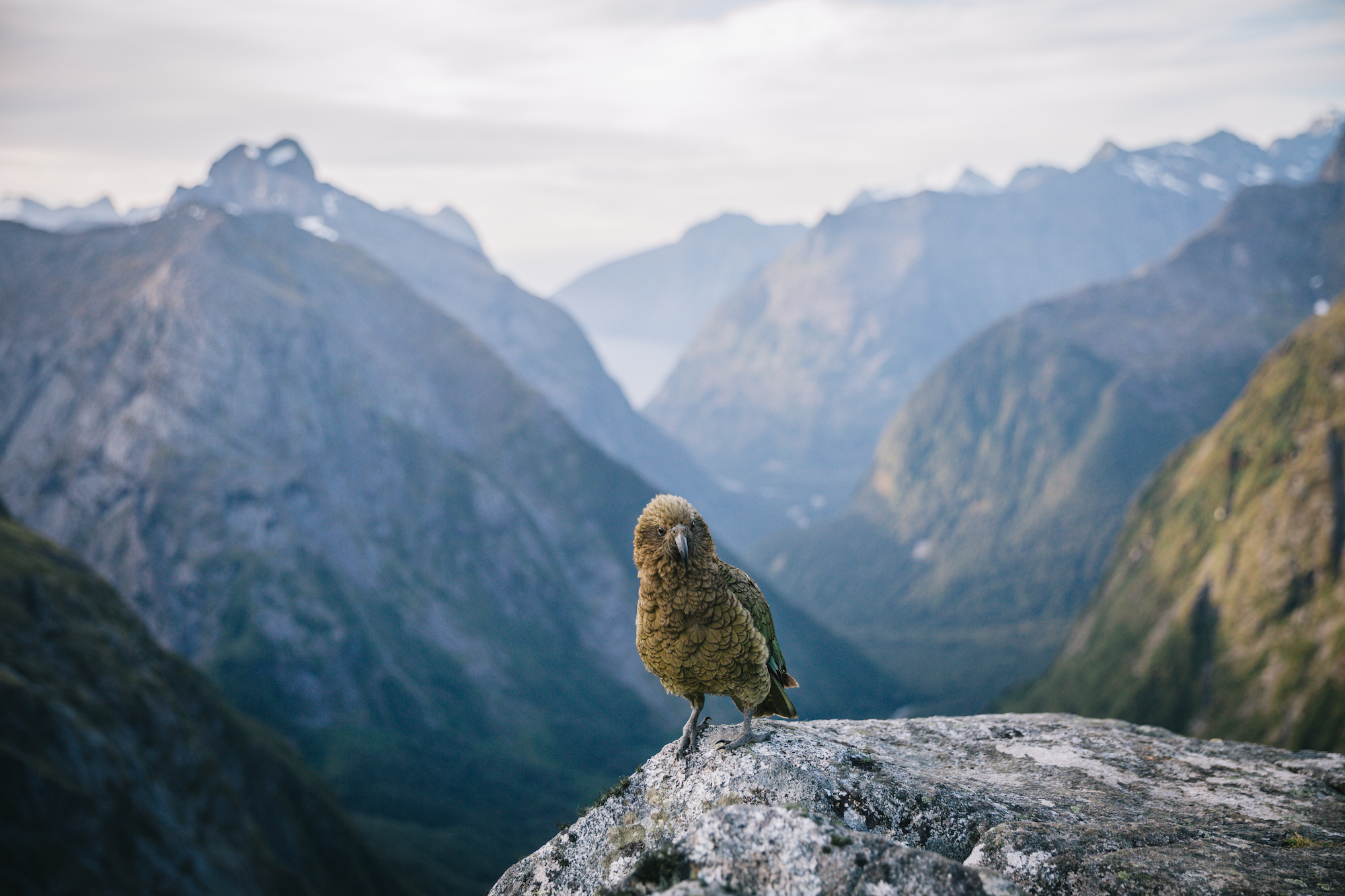New Zealand is house to a few of the rarest birds on this planet. And this isn’t accidentally. It’d shock you to study that New Zealand’s biodiversity is uncommon and really totally different from the remainder of the world. And the South Island birds are a few of the most original.
As an island, birdlife dominated the land and skies and developed with out the specter of mammals strolling the shores, that’s, till people arrived round 1300 AD. The one native mammals in New Zealand have been two sorts of bats.
The primary people launched rats and canine into the wild right here, after which afterward, settlers introduced in pigs, goats, deer, extra rat species, cats, rabbits, mustelids (ferrets, stoats, and weasels), and possums. Since then, dozens of chook species have grow to be extinct, and others are endangered and hanging on for pricey life. In actual fact, a conservative estimate is that launched mammals kill greater than 25 million native birds yearly. Mixed with different elements like land clearance, habitat loss, meals competitors, and drainage, most birds face a difficult future.
However the kiwis are combating again—each the folks and the birds.
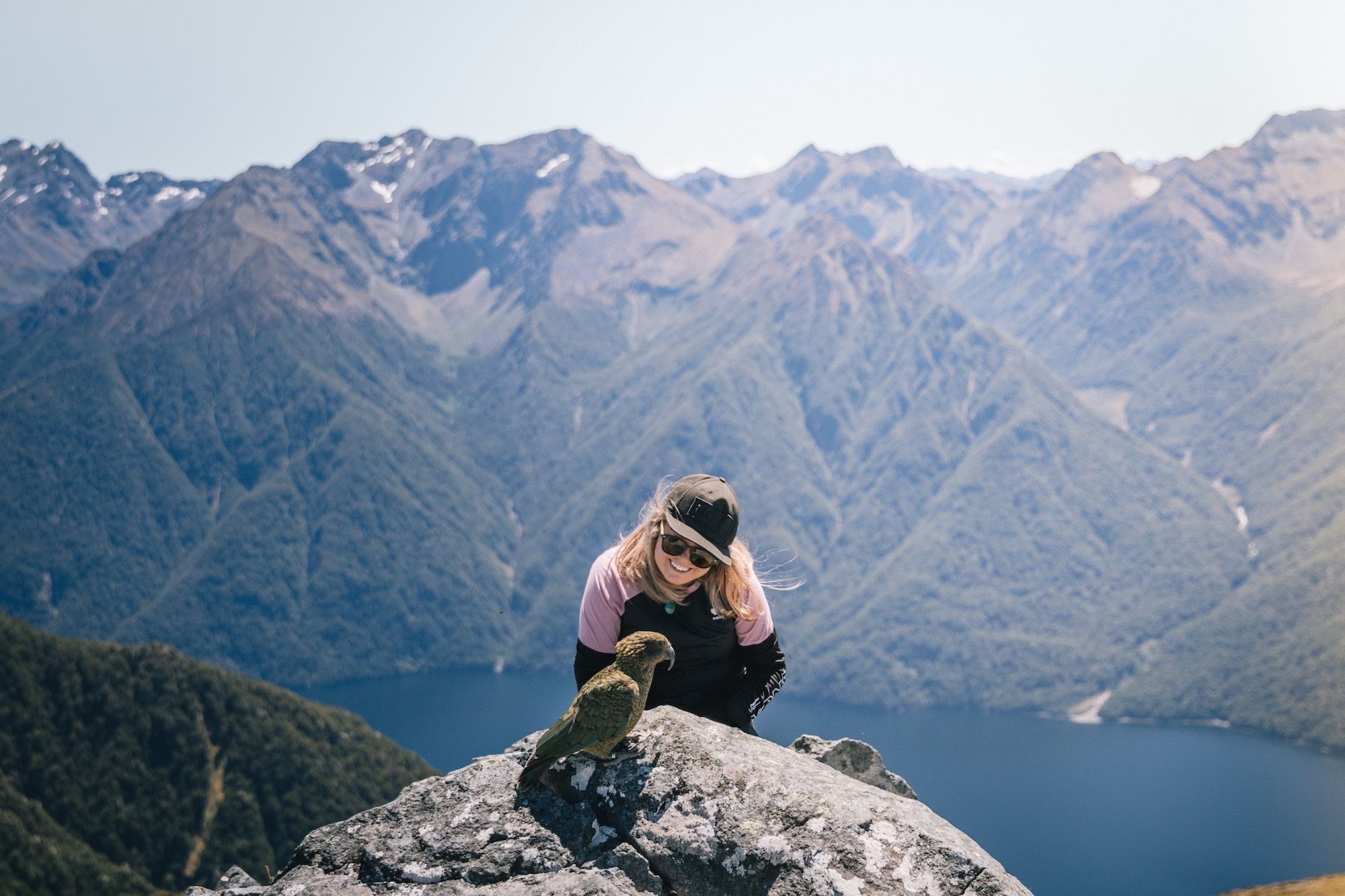
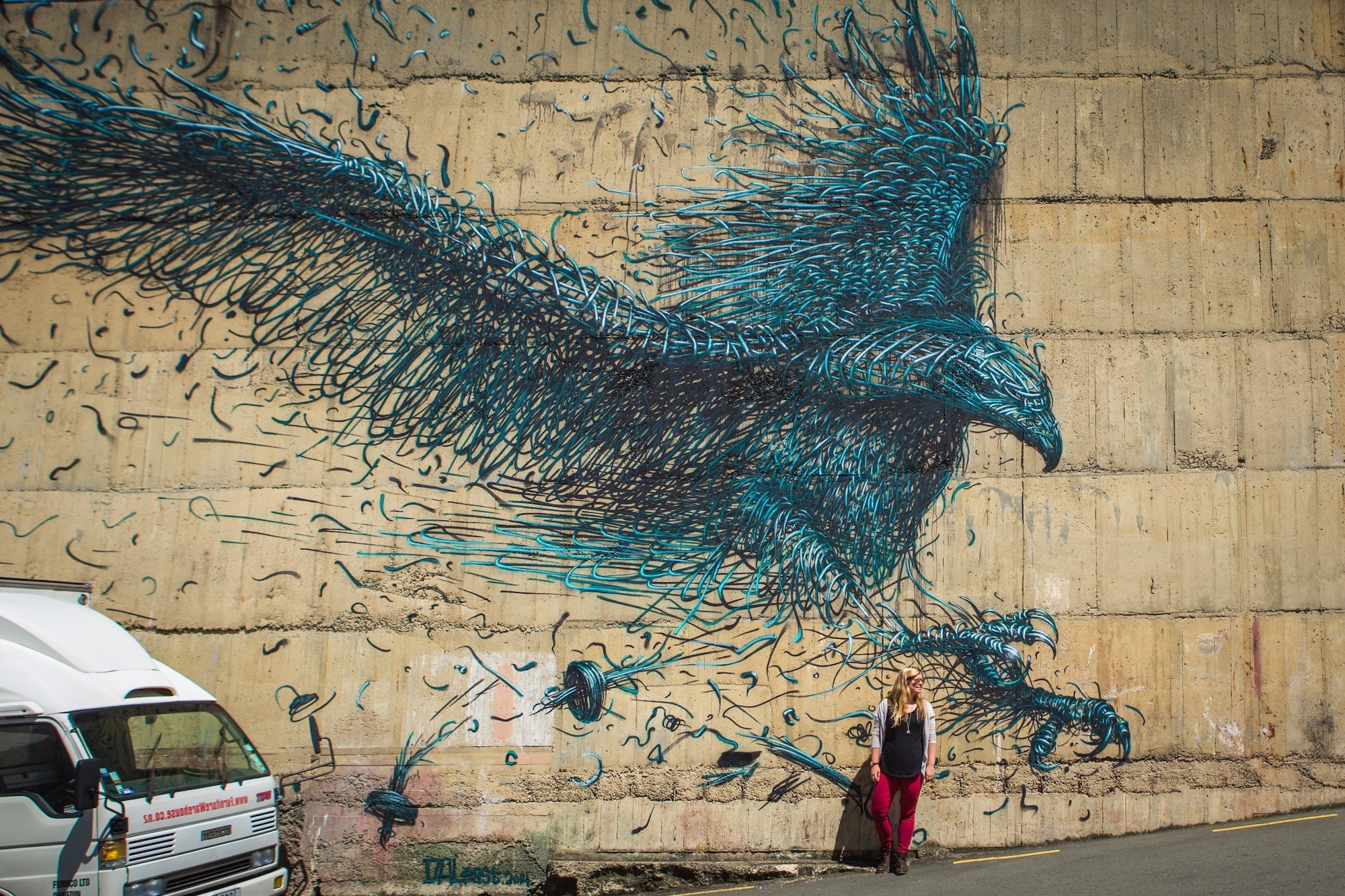
As an alternative of giving up and letting many extra species go extinct, the Division of Conservation (DOC) in New Zealand, together with many different teams, personal, public, trusts, and nonprofits, like Predator Free NZ, are working around the clock to combat the extinction on our shore. With enormous efforts of predator management across the nation, it provides the birds a significantly better probability at survival. With out it, we are able to just about kiss most of them goodbye inside our lifetimes.
Defending these uncommon South Island birds is necessary to me. In case you’ve adopted me for a very long time, you most likely have observed how I’ve shifted my content material increasingly towards conservation and sustainability. I attempt to align myself with manufacturers that look after the planet and its creatures.
For the previous decade, together with DOC, certainly one of my largest supporters has been RealNZ (previously Actual Journeys). Based by native legends Les and Olive Hutchins again within the 50s, they helped combat the nice combat to save lots of Lake Manapouri and defend Fiordland. These conservation values have lengthy been the core of the corporate ever since. We expect alike and see how distinctive our taonga (treasured) species are first-hand on the South Island in Fiordland and Rakiura (Stewart Island).
I’ve traveled throughout New Zealand for the previous decade and located a few of the finest locations for assembly a few of our uncommon and endangered South Island birds round Fiordland and Rakiura.
Prepare to satisfy a few of my favourite South Island birds. Take pleasure in!
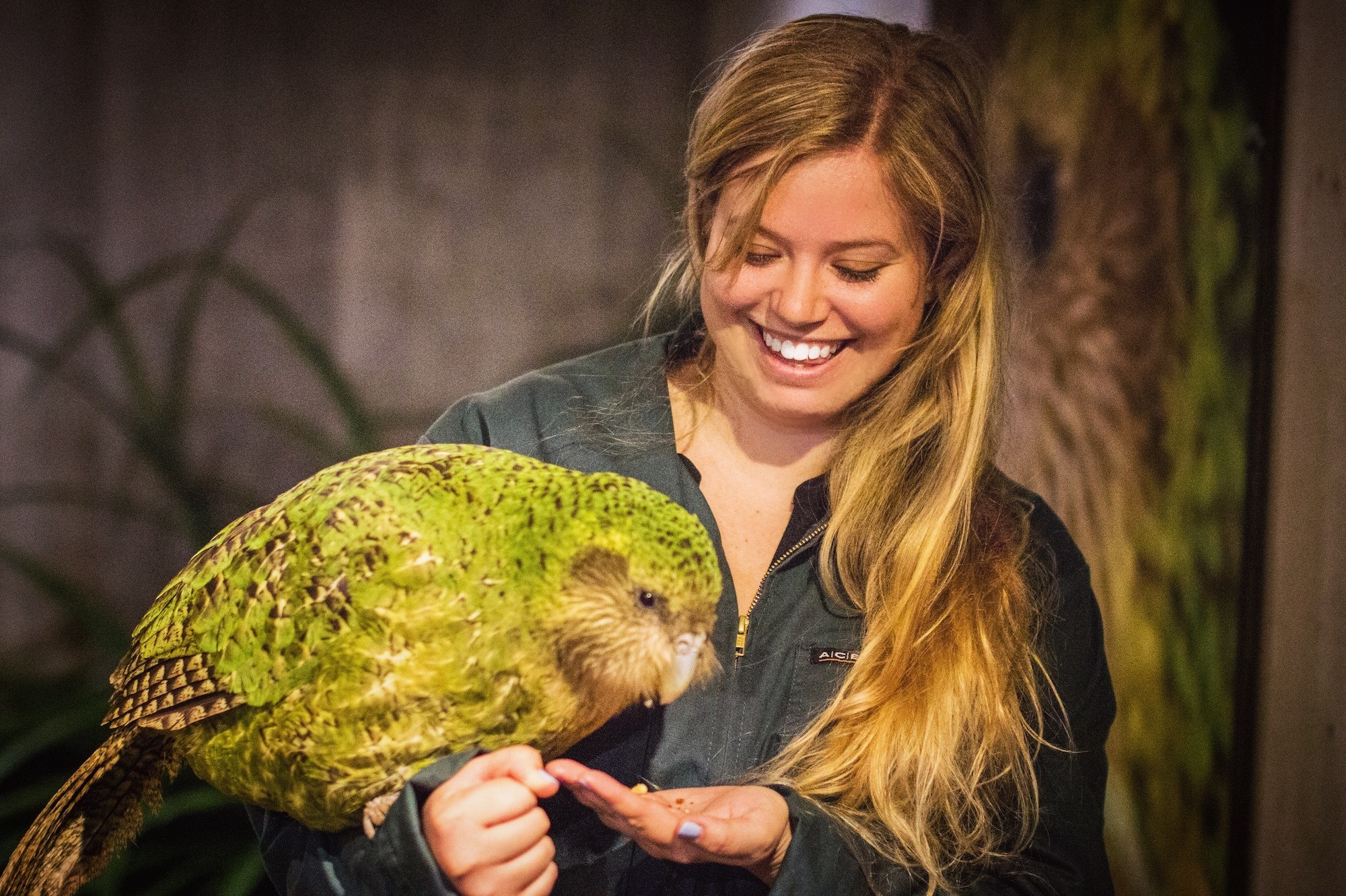
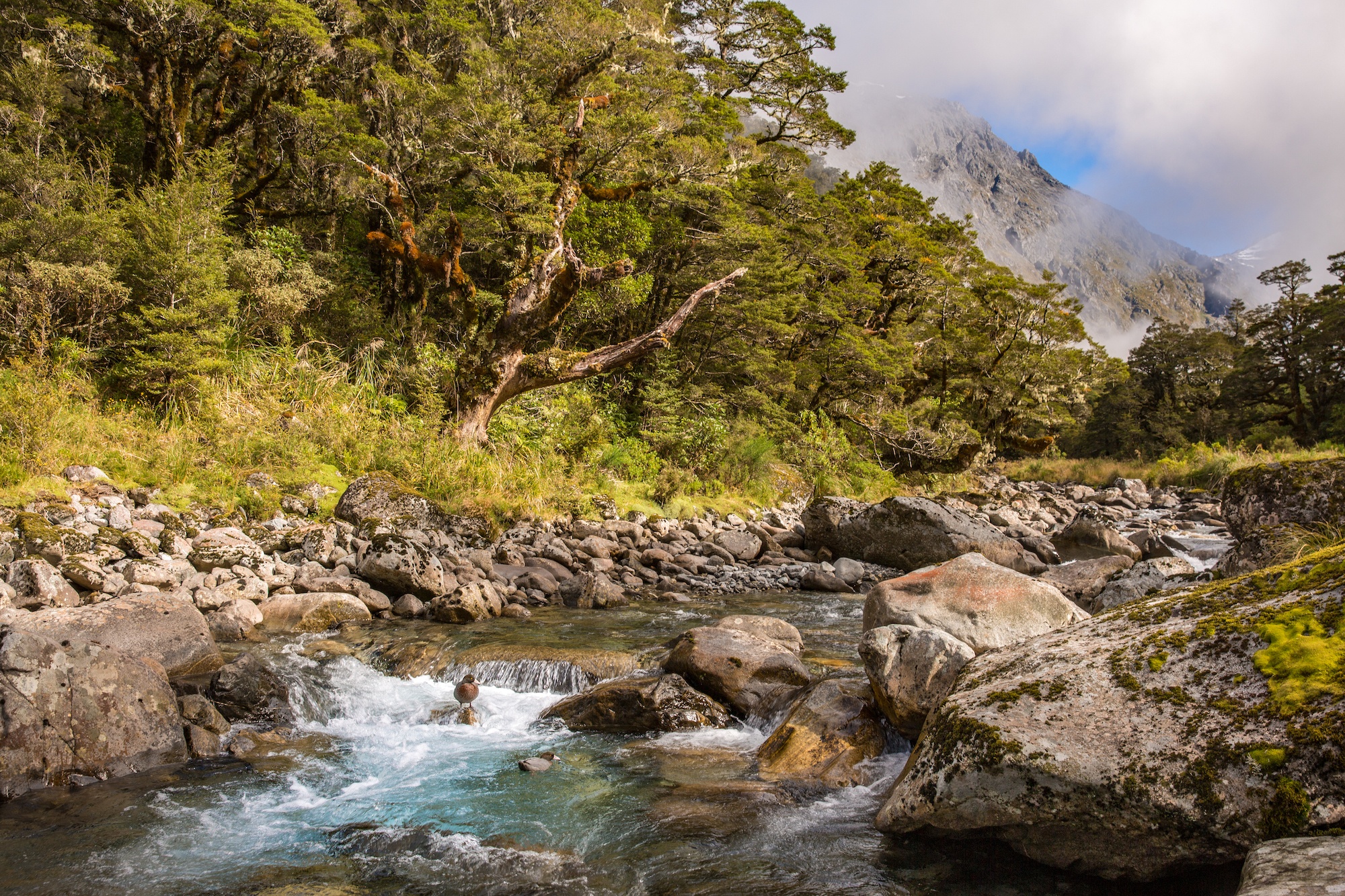
1. The cheeky Kea
The highest contender for each essentially the most beloved and most despised chook in New Zealand needs to be the kea. The world’s solely alpine parrot is taken into account one of the clever birds on this planet, which suggests they usually stand up to no good. Farmers claimed they killed their sheep, so there was a government-sponsored bounty on their beaks for a century – killing over 150,000 kea.
Nearly extinct, lower than 7,000 kea are left in New Zealand, and they’re nationally endangered and declining. Stunning and cheeky, they’re a fan favourite of vacationers, that’s, till they rip your automobile window rubber to items or destroy your tent and throw your mountain climbing boots off a cliff. With huge personalities and essentially the most stunning feathers, kea are particular. We’re fortunate to have them.
As a result of the populations of kea are so small now, it’s not at all times simple to seek out them. One place you may see them is alongside the Milford Street in Fiordland. They love hanging out by the Homer Tunnel and at a few of the pullover spots. In case you take a day journey to Milford Sound with the bus switch from Queenstown or Te Anau with RealNZ, they cease at these locations, and you may see them up shut and private.
However keep in mind, NEVER FEED THE KEA. As we are saying right here, a fed kea is a lifeless kea. Feeding kea is dangerous for a lot of causes – you may learn extra right here.
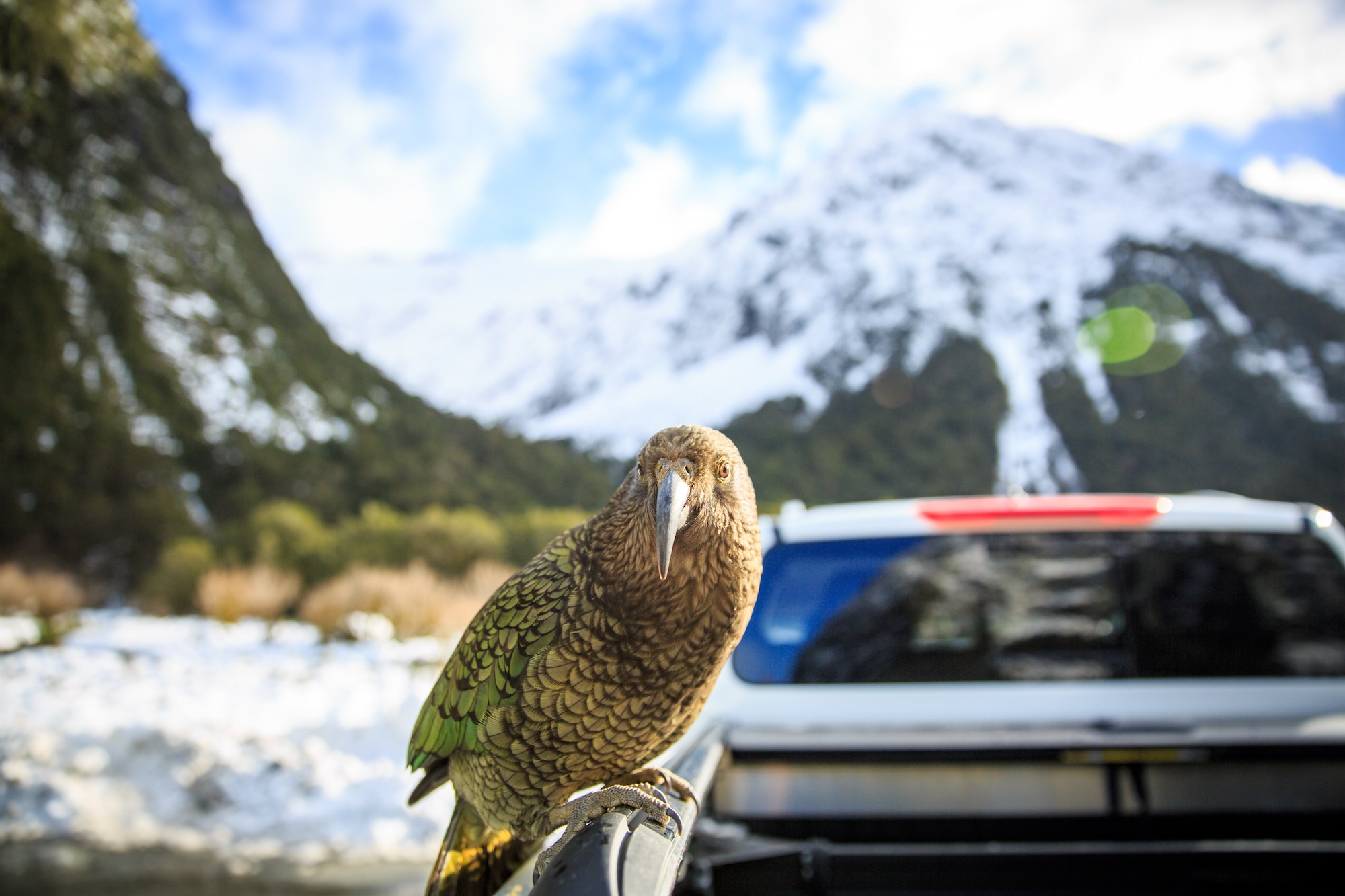
2. The alpine rock wren/pīwauwau
Whereas most individuals affiliate the kea as New Zealand’s iconic alpine chook, the reality is they’re solely partly alpine as they nest within the forest. Rock wren/pīwauwau are literally New Zealand’s solely true alpine chook. Ka-boom, take that, kea!
Weighing lower than an AA battery, they’re tiny however mighty. I’ve been recognized to waste a ton of time whereas tramping, ready round, and in search of rock wren once I’m within the mountains. Simply final summer season, I made an epic mistake by spending two hours watching the rock wren on the Gillespie Move, that means I needed to end the tramp in the dead of night in a forest the place the path was principally invisible. 10/10 don’t advocate. However hey, it’s fairly cool there are rock wren up there! I’ve additionally seen them a number of instances whereas tramping in Fiordland.
Rock wren are in deep trouble. Stoats love them, and local weather change will impression them too. When severe predator management efforts exist, about 85% of nests are profitable. With out predator management, nests nearly at all times fail.
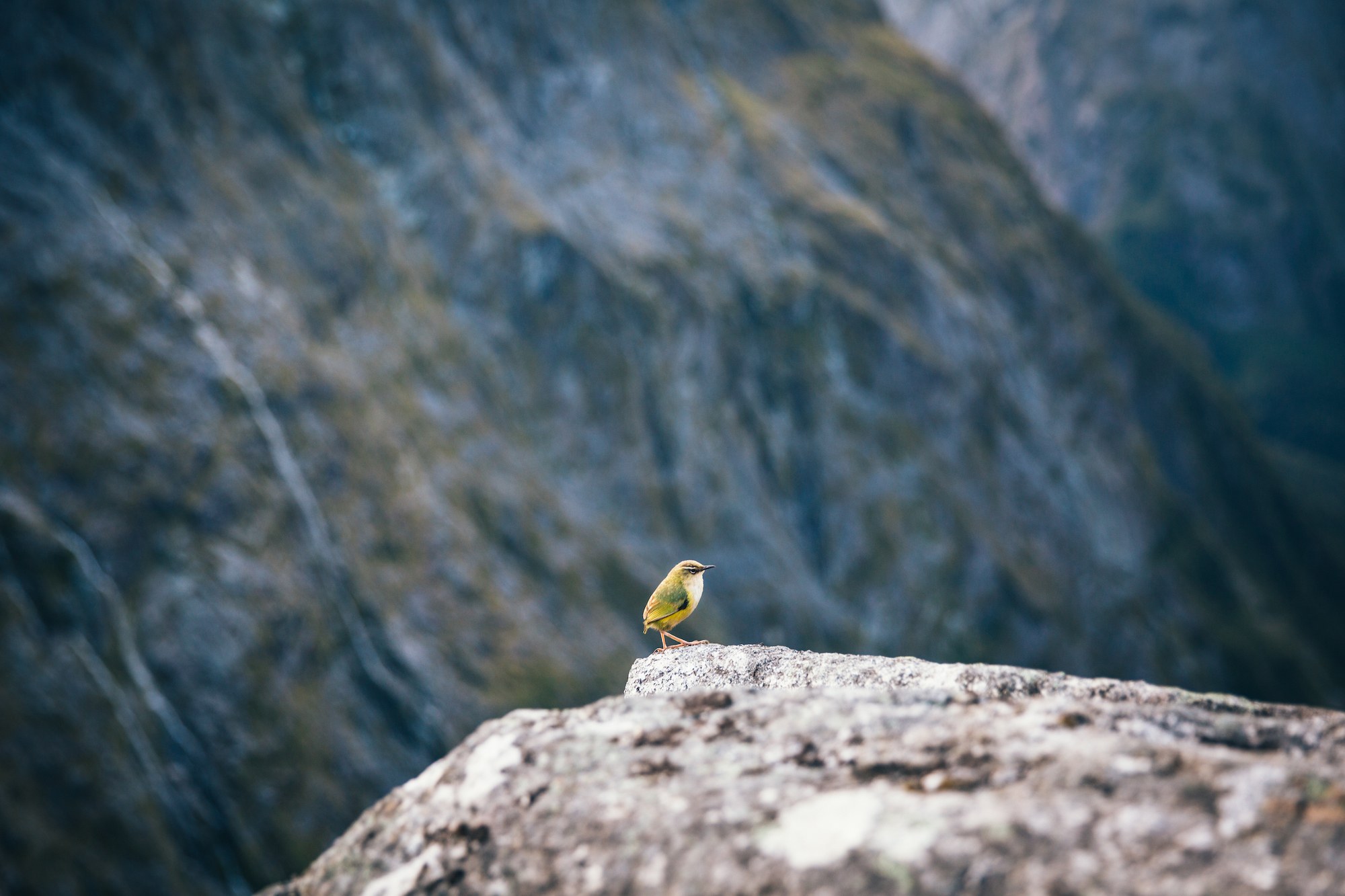
3. The quirky weka
If I had a greenback for all of the instances that vacationers have informed me they have been so fortunate and noticed 20 kiwi in Fiordland who got here proper as much as them, I’d most likely have round $20. Placing a stability between bursting their bubble and protecting them completely satisfied, I discover myself kindly explaining that it was undoubtedly not kiwi; as an alternative, it was most likely the weka.
If anybody sees 2o curious kiwi throughout the daylight that come proper as much as you, please let me know as a result of that doesn’t occur, haha. Kiwi are uncommon, elusive, shy, solitary, and, most significantly, nocturnal. Weka? You see them everywhere, particularly in Fiordland. They’re so ample they eat them on the Chatham Islands.
Weka have a tendency to not get quite a lot of love. They arrive throughout as bizarre, scavenger-esque, and sometimes even a complete ache, particularly for conservation employees. They’re predatory with different native species (regardless that they’re additionally threatened and declining), in order that they’re usually not welcome on predator-free islands.
Weka poop their very own weight in a day, which earns them respect, for my part!
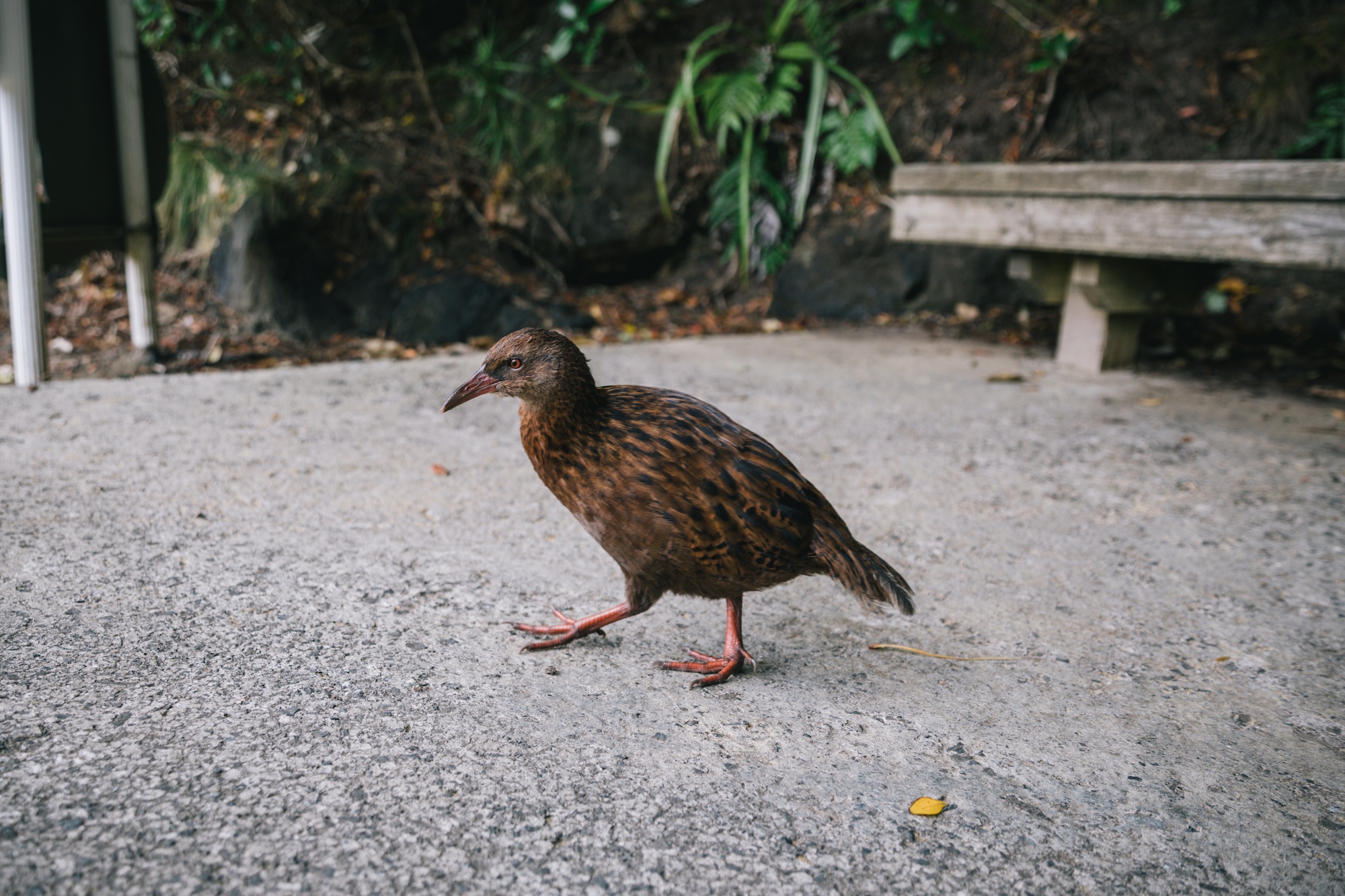
4. The takahē: the chook that got here again from the lifeless
Takahē have lengthy been certainly one of my favourite chook success tales in New Zealand. Declared extinct after not being noticed for 50 years, takahē have been rediscovered in 1948, hidden deep in Fiordland’s Murchison Mountains.
Takahē are New Zealand’s largest flightless chook, with mammals being the largest menace to their survival. In 2007, a stoat plague halved the takahē inhabitants within the Murchison Mountains, and these days, there are about 400 birds. One other fantastic but bizarre poo truth is that the takahē can poo as much as 9 meters a day.
Whereas it’s more durable to see them within the wild as a result of their populations are protected, you may see takahē in many sanctuaries across the nation. These massive blue flightless birds give us all hope for different species. For instance, the South Island kōkako was listed as extinct till 2013 when DOC reclassified its standing as ‘information poor,’ with many individuals recording sightings and songs of the chook because the hunt continues to seek out them.
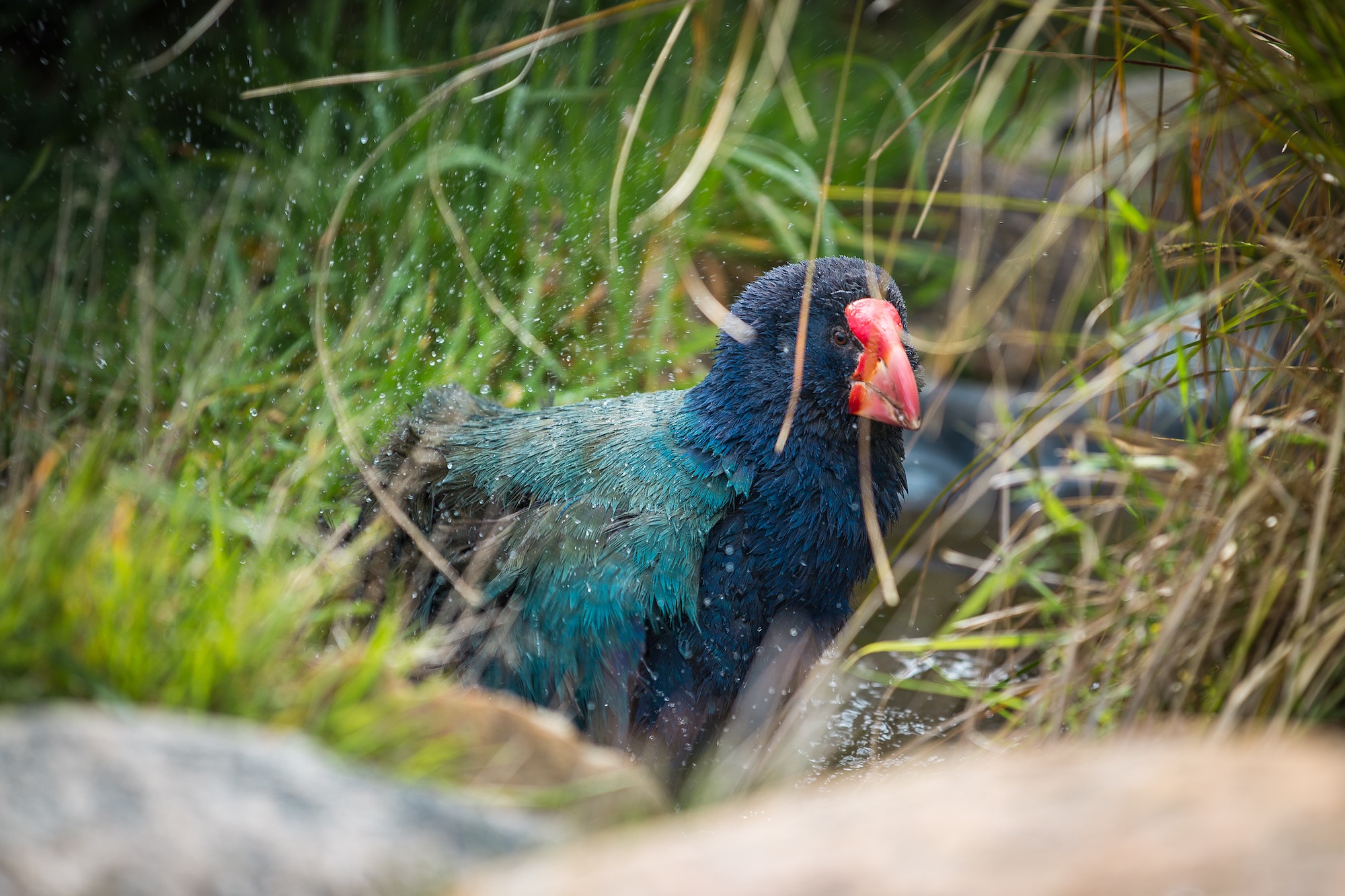
5. Essentially the most expressive tawaki/Fiordland crested penguin
The Fiordland crested penguin/tawaki is the one penguin on this planet to dwell deep within the rainforest right here in New Zealand. With their jaunty, bushy yellow eyebrow feathers, they’re very uncommon, with the present tawaki inhabitants sitting between 2,500 and three,000 breeding pairs.
For the previous 70 years, they’ve been in decline, so seeing these guys within the wild makes it all of the extra particular.
Uncertain Sound is likely one of the locations the place I’ve often seen tawaki. On the Uncertain Sound in a single day cruises with RealNZ, you’ve a greater probability of seeing them at daybreak or nightfall they go/return from the ocean. The very best time of 12 months to see tawaki is throughout the breeding season, from July to November.
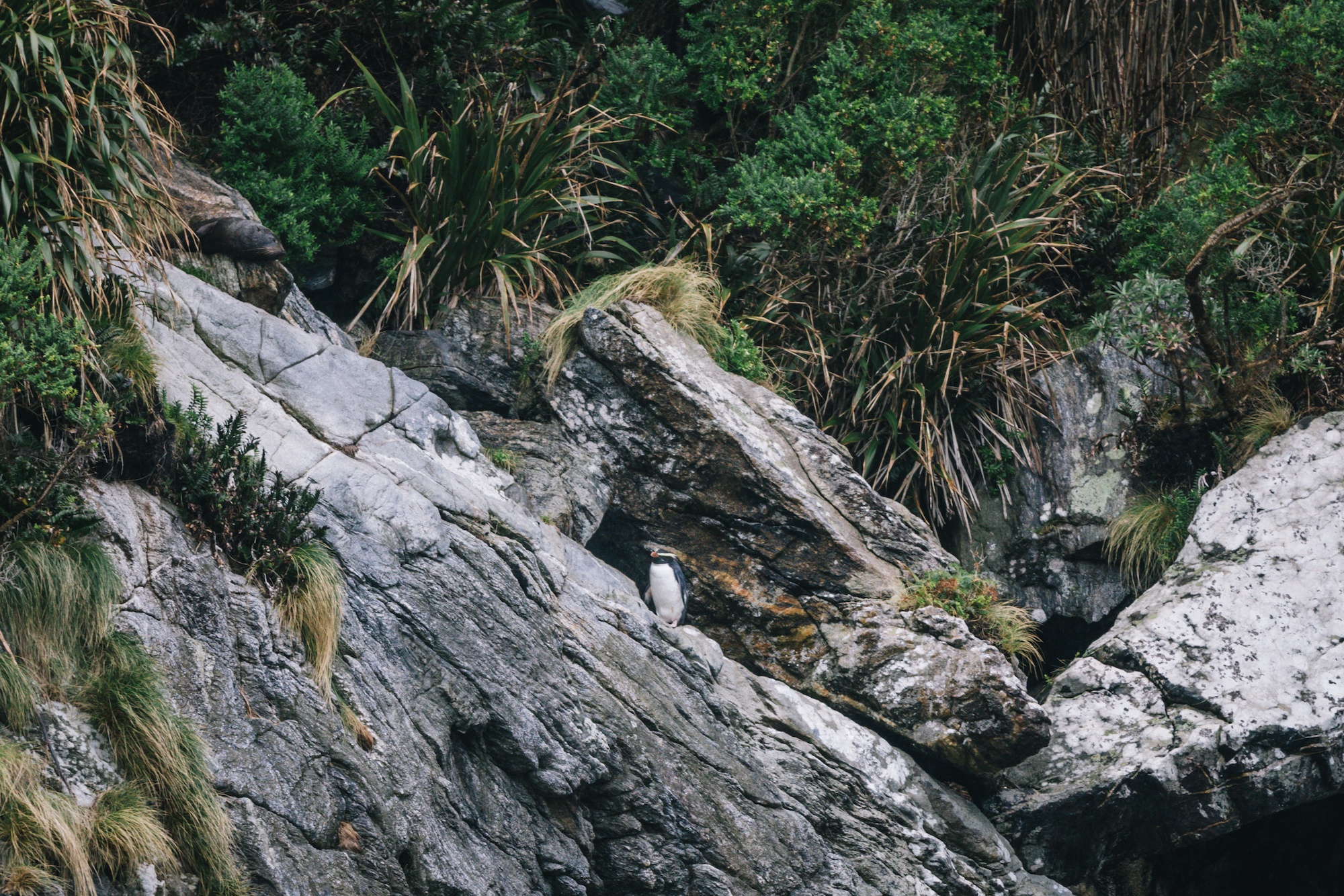
6. The white-water rafting blue duck – the whio
Do you know our endemic duck right here in New Zealand doesn’t quack? The whio/blue duck may be very uncommon, with solely 3,000 left; the males whistle whereas the females growl. Additionally, a superb reminder that the ‘wh’ in ‘whio’ is pronounced as an ‘f.’ Payment-oh. Say it with me, fee-oh.
The white water rafting duck, whio want clear, fast-flowing rivers to thrive. You’ll additionally spot them on the 10-dollar be aware right here. Whio Without end helps take care of these South Island birds in a partnership between Genesis Power and DOC. RealNZ additionally contributes in the direction of Whio Restoration as a part of its conservation initiatives.
Whereas the kea are inclined to get all the eye on the Milford Street, I’ve noticed many whio there too, in addition to round Fiordland.
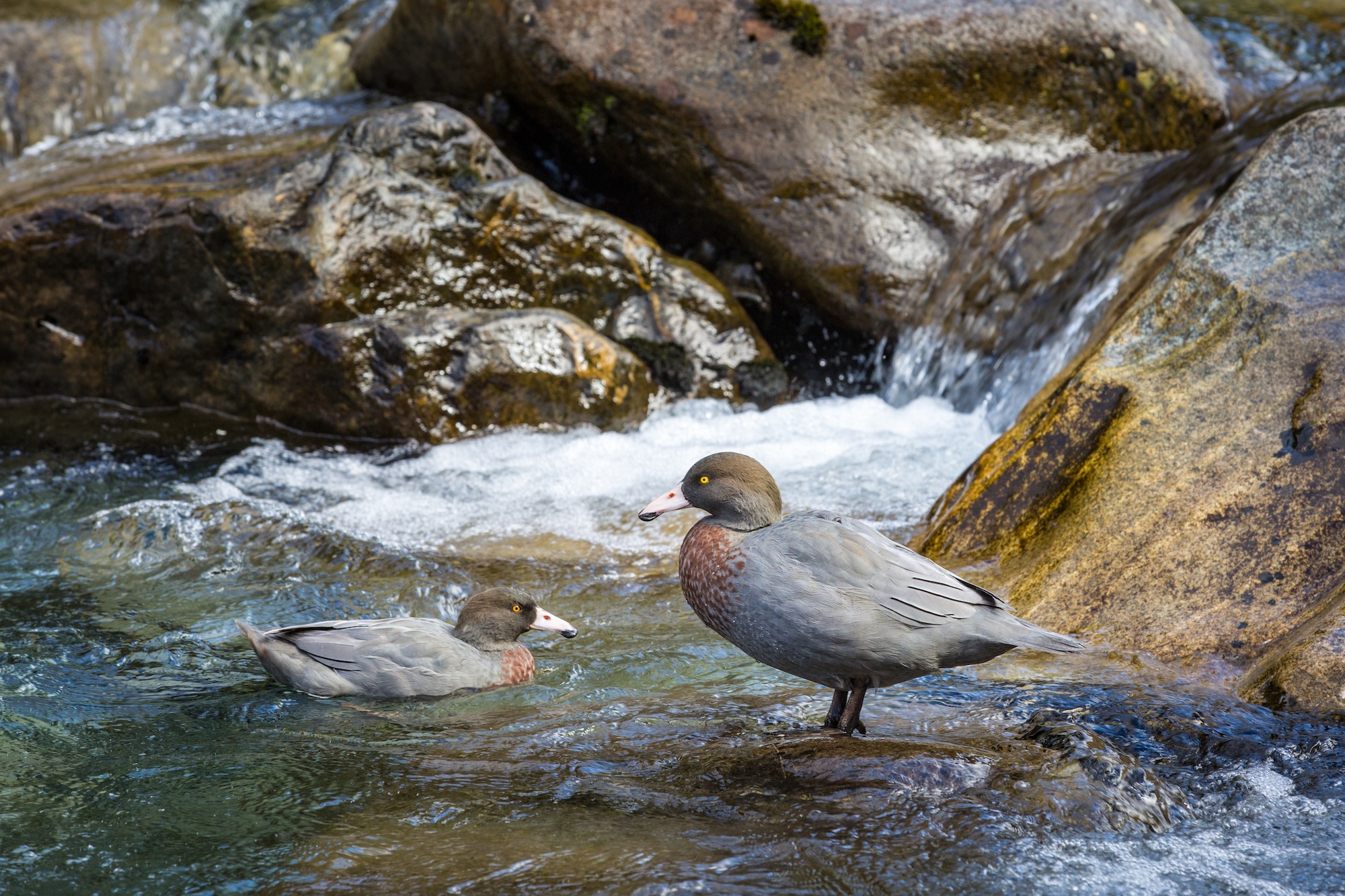
7. The lovable little $100 mohua/yellowhead
So a lot of our flashier, greater South Island birds get all the eye right here in New Zealand, and it’s simple to overlook in regards to the little guys. The mohua/yellowhead is a small, insect-eating chook that lives solely within the forests of New Zealand’s South Island. Mohua are uncommon and declining; actually, there are lower than 5,000 mohua left.
These days, you could find mohua gracing our $100 be aware right here in New Zealand.
Early settlers known as it the ‘bush canary’ due to its coloration and exquisite music. You will discover mohua in pockets across the South Island, together with Fiordland. They’re a chook you kinda need to be on the hunt to seek out. I’ve seen them essentially the most in Fiordland, round Dusky Sound, the place there may be quite a lot of predator management. In partnership with DOC, RealNZ runs some severe predator management efforts round Dusky Sound, together with the bold Cooper Island Restoration Undertaking.
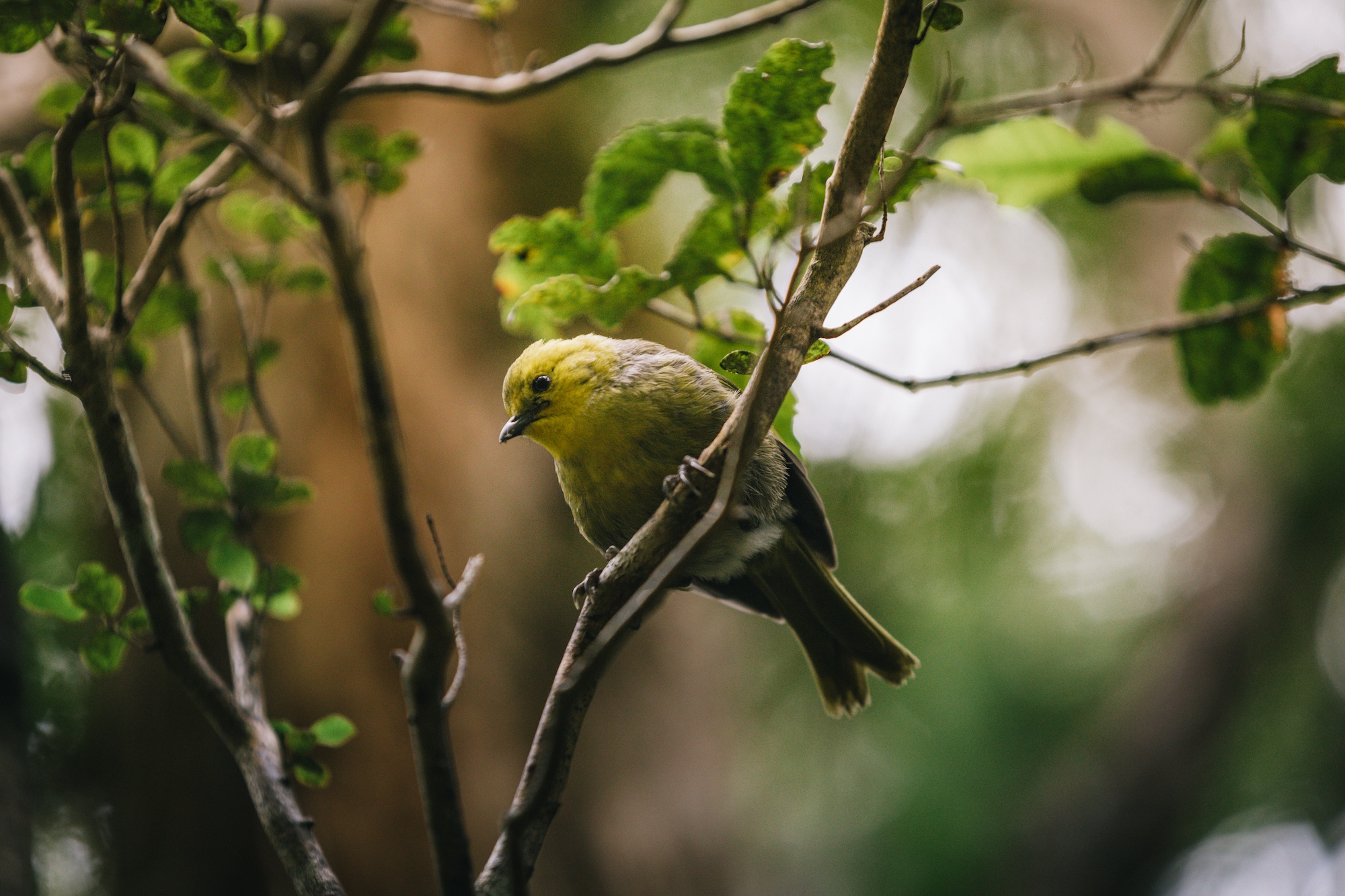
8. The opposite noisy and loveable parrot – the kākā
The forest-dwelling cousin of the kea is the kākā, stunning brown, crimson, and yellow coloured parrots which might be making an actual comeback throughout most of New Zealand; even if you happen to don’t see them, you may hear them chattering and shrieking away within the treetops.
Like a lot of our different South Island birds, they’re nonetheless in danger from predators, but in addition habitat loss – kākā want quite a lot of forest to thrive.
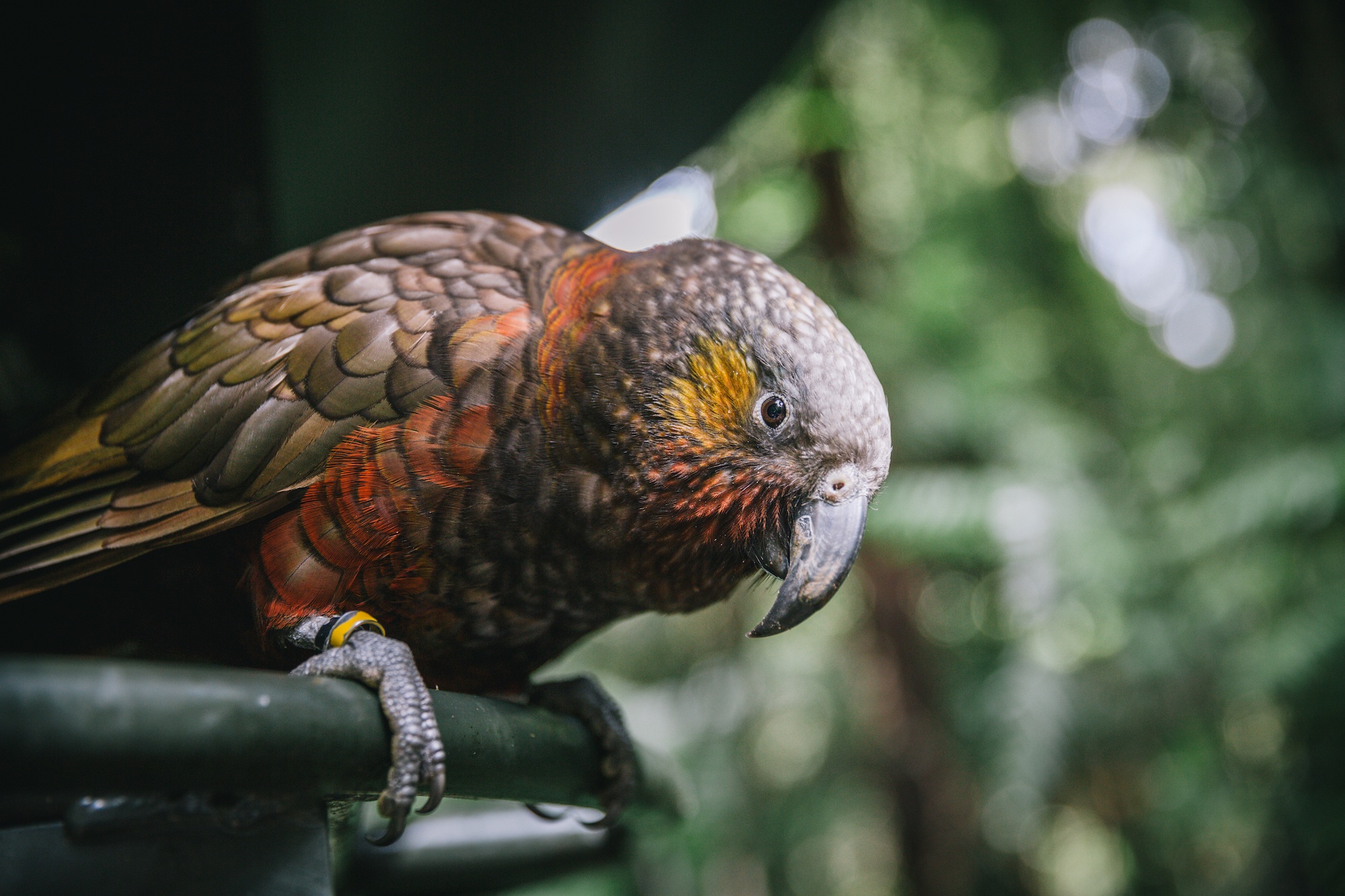
9. The enduring kiwi/tokoeka, our nationwide treasure
The kiwi undoubtedly is likely one of the world’s weirdest birds. Distinctive, curious, and nocturnal, kiwi can’t fly, they usually have free, hair-like feathers. There are 5 species of kiwi throughout New Zealand, with lower than 70,000 left. Down south right here, we’ve got the tokoeka kiwi, which accurately means ‘weka with a strolling stick.’ And there are three genetically distinct types of the tokoeka kiwi: Haast, Fiordland, and Rakiura (Stewart Island).
Your finest probability of seeing kiwi within the wild is on Rakiura. Realnz’s Chief Conservation Officer, Paul Norris, can be chair of Predator-Free Rakiura, whose purpose is to rid Rakiura of launched predators to assist greater than 20 threatened species. RealNZ works laborious to assist this marketing campaign.
Nationwide, roughly 20% of the kiwi inhabitants is underneath administration. In areas with predator management, 50-60% of chicks survive. With out predator management, 95% of kiwi die earlier than reaching breeding age.

10. The beloved, drunken kererū
New Zealand’s pigeon, the kererū, is a big, superbly inexperienced, bronze, and white chook you may usually see across the nation. With a tiny head, you may at all times hear the woosh-woosh sound it makes because it takes flight within the forest.
However maybe what kererū are most recognized for is that they often get drunk on fermented berries and fall out of timber. And never only one, both.
Inhabitants-wise, they’re doing okay, although the kererū is declining in areas with no predator management.
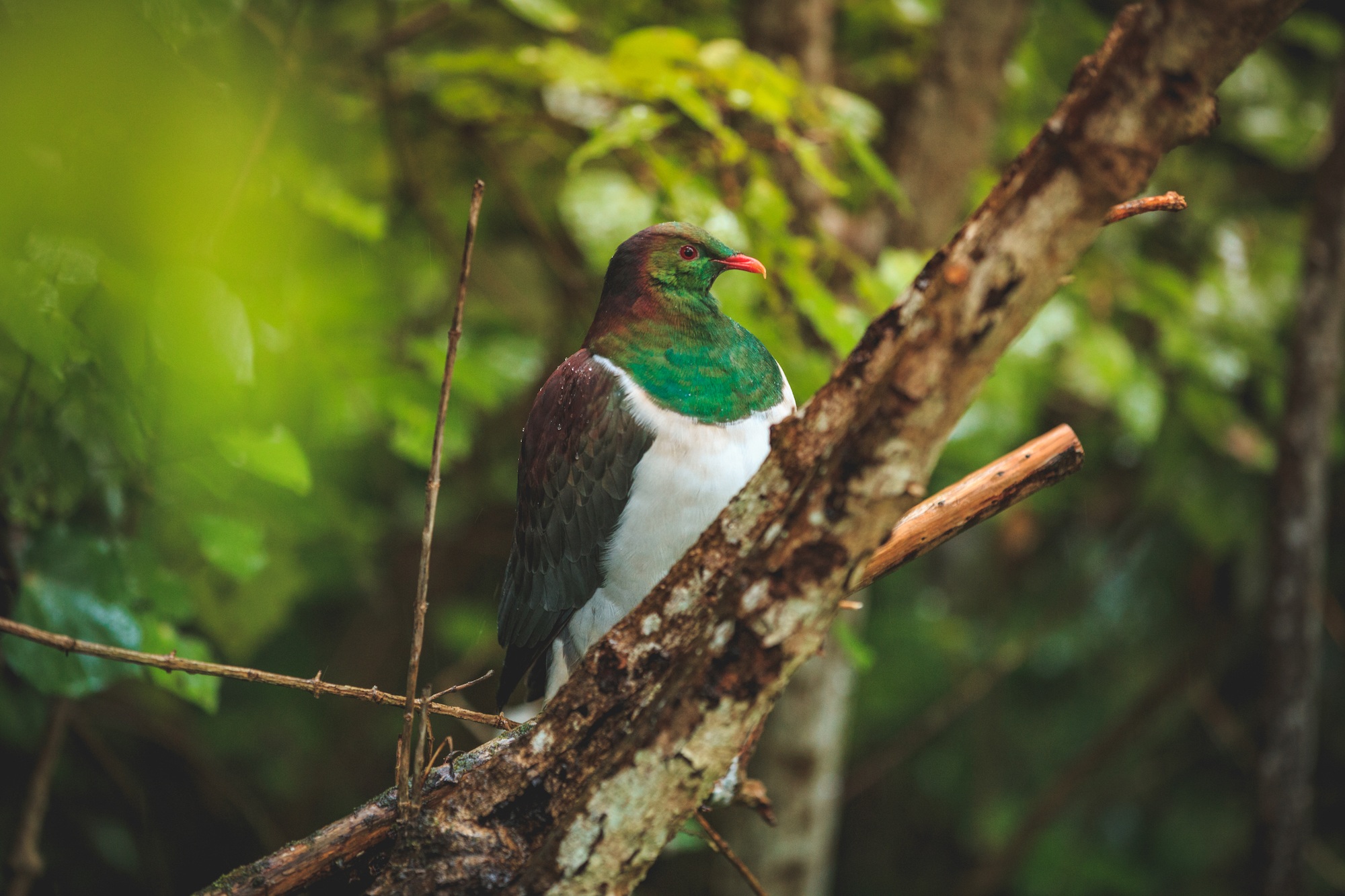
11. The musical bellbird/korimako, with its haunting songs
After I lived in Dublin Bay in Wānaka, a bellbird/korimako lived within the huge tree outdoors my balcony. At sundown, he would start singing. I’ve such stunning recollections of it, and at any time when I hear the decision of the bellbird within the forest, I do not forget that chapter of my life.
The music of the bellbird might be essentially the most simply recognizable name right here in New Zealand.
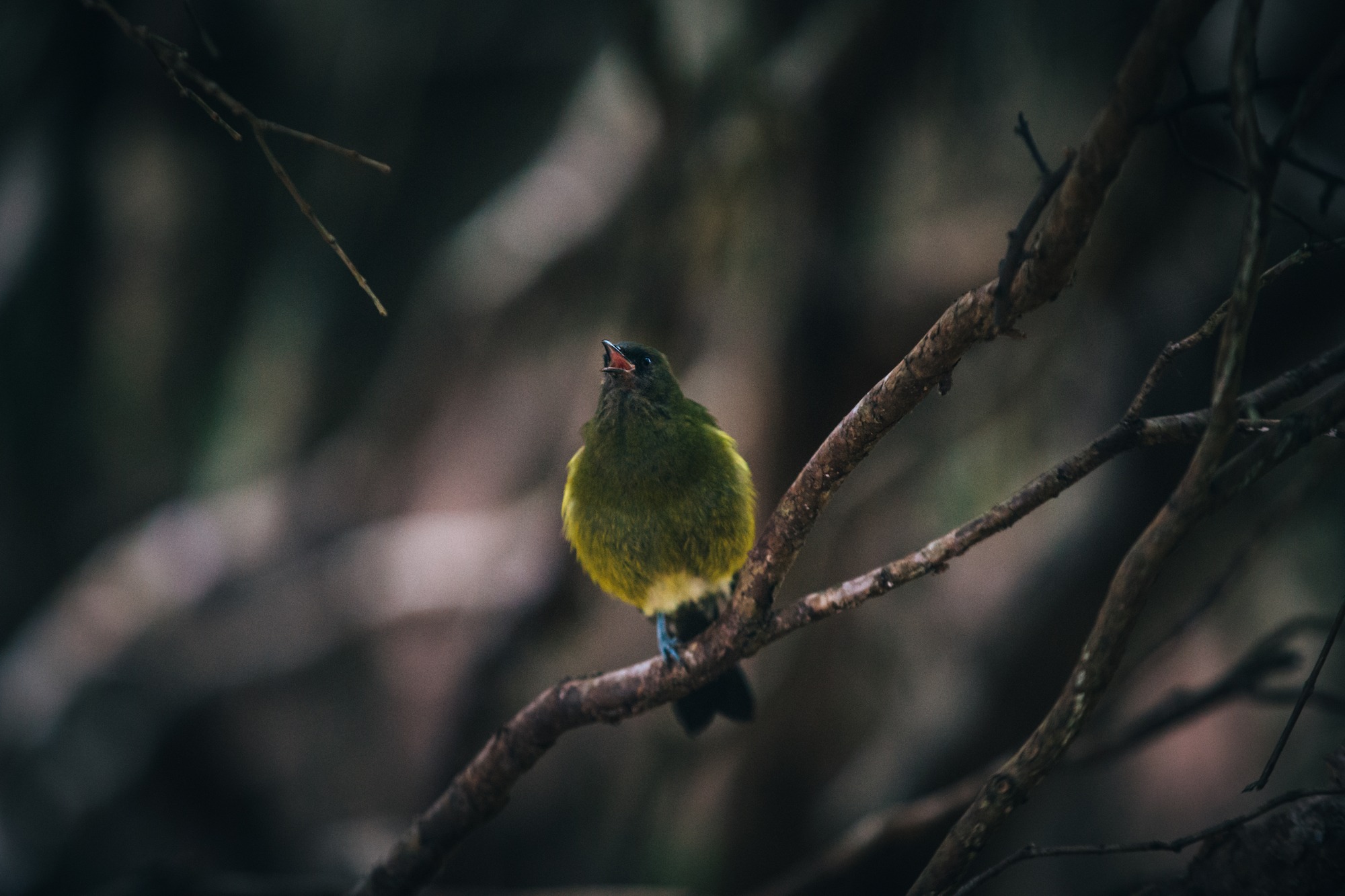
12. The boisterous little fantail/pīwakawaka
Recognized for its iconic ‘cheet cheet’ music and energetic flying antics bopping round all around the forest, the fantail/pīwakawaka is likely one of the commonest native birds right here in New Zealand. As a result of they’ve many chicks, fantails have fared comparatively nicely with the incursion of mammal predators. You would possibly even see a stable black fantail if you happen to’re fortunate.
In Māori tales, the fantail was liable for bringing information of dying. It’s horrible luck to see a fantail in a home.
Maui (the trickster demi-god), pondering he might eradicate dying by efficiently passing by the goddess of dying, Hine-nui-te-po, tried to enter the goddess’s sleeping physique by the pathway of beginning. The fantail, warned by Maui to be quiet, started laughing and woke Hine-nuite-po, who killed him.
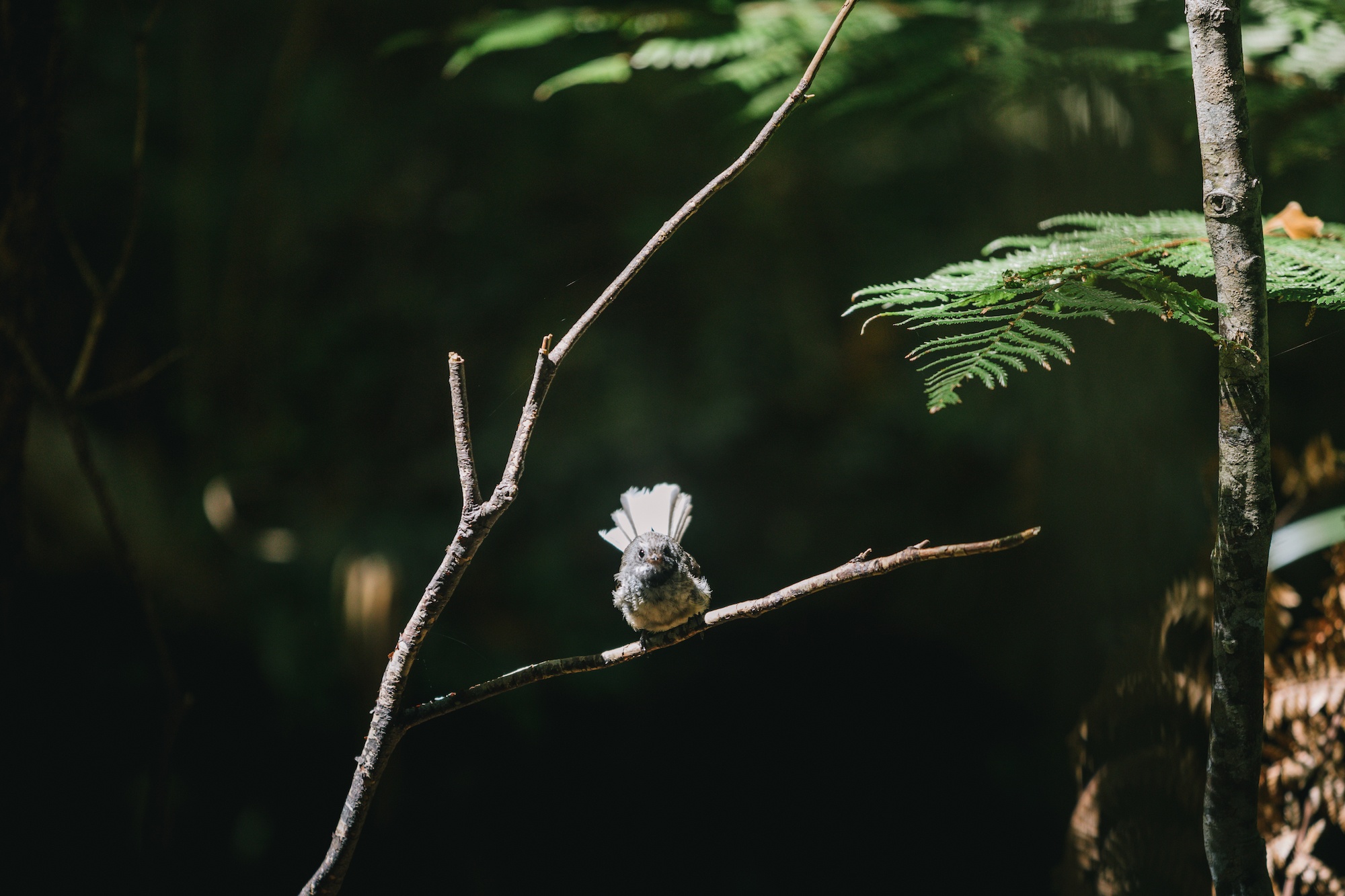
13. The gang favourite – the tūī
It looks like the whole lot in New Zealand is called after the tūī. Beers, manufacturers, and even canine are sometimes known as tūī, certainly one of our most prolific and noisy songbirds. In case you hear a music within the forest, it’s usually the tūī. The tūī is superb at mimicking sounds and calls from different birds.
With stunning coloring and a white feather on the chest, they’re simple to identify. Generally they’re a bit territorial.
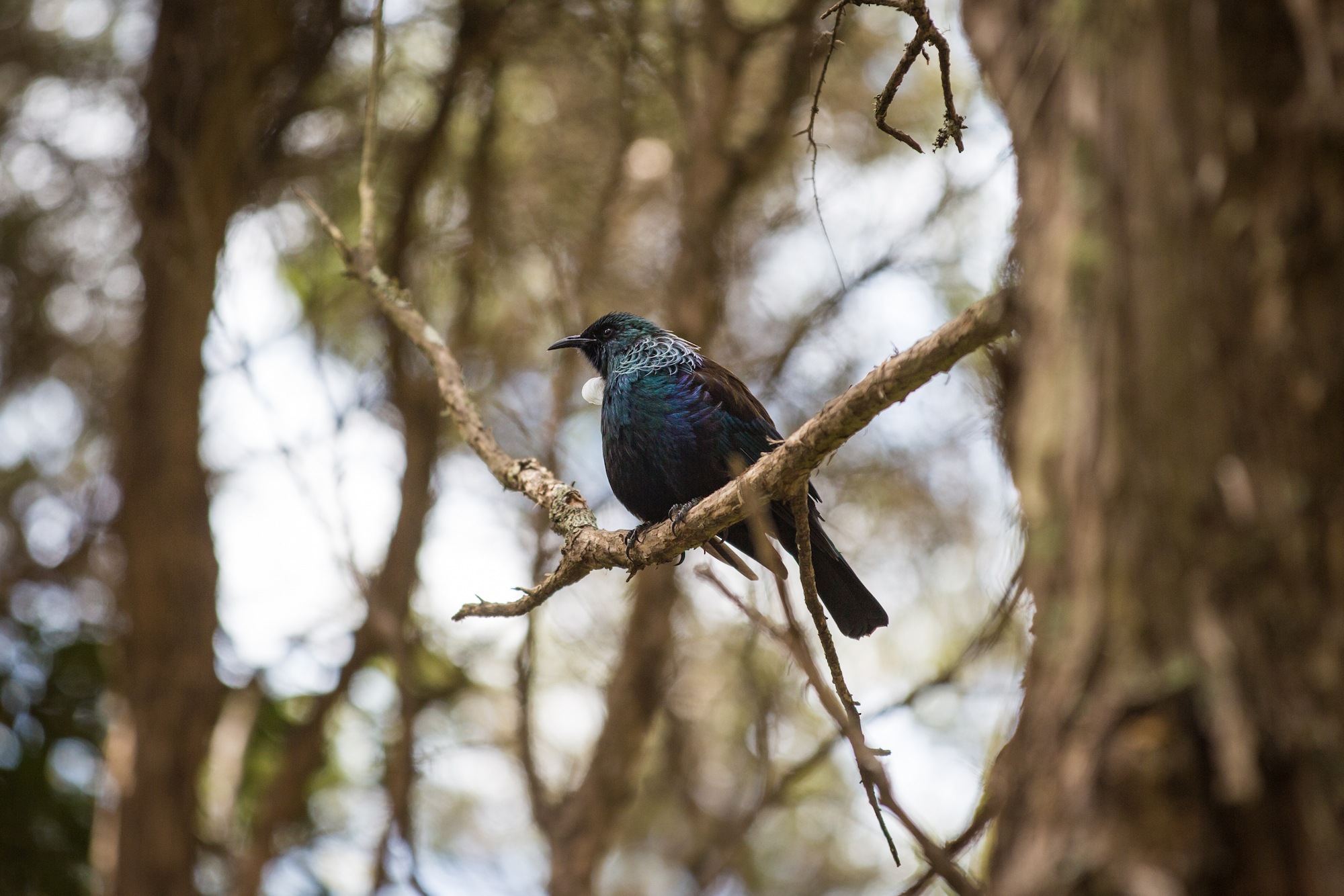
14. The pleasant little South Island robin/toutouwai
The New Zealand robin/toutouwai is at all times certainly one of my favourite South Island birds as a result of they’re so curious. Now that I’m into birdwatching, I usually decelerate whereas tramping and take the time to pay attention for calls and to soak within the place I’m exploring. Inevitably, a robin normally reveals as much as preserve me firm.
In case you sit nonetheless and watch them lengthy sufficient, they’ll usually come proper as much as you. I’ve had them land on my cameras or perch on my boots. They like that our boots churn up the bottom revealing bugs for them to munch on.
Whereas they’re declining, I usually see them mountain climbing within the nationwide parks. There are three varieties: North Island robins, South Island robins, and Stewart Island robins, all of that are intently associated. With their chubby spherical our bodies perched on lengthy spindly legs, they’re tremendous cute to watch within the wild.
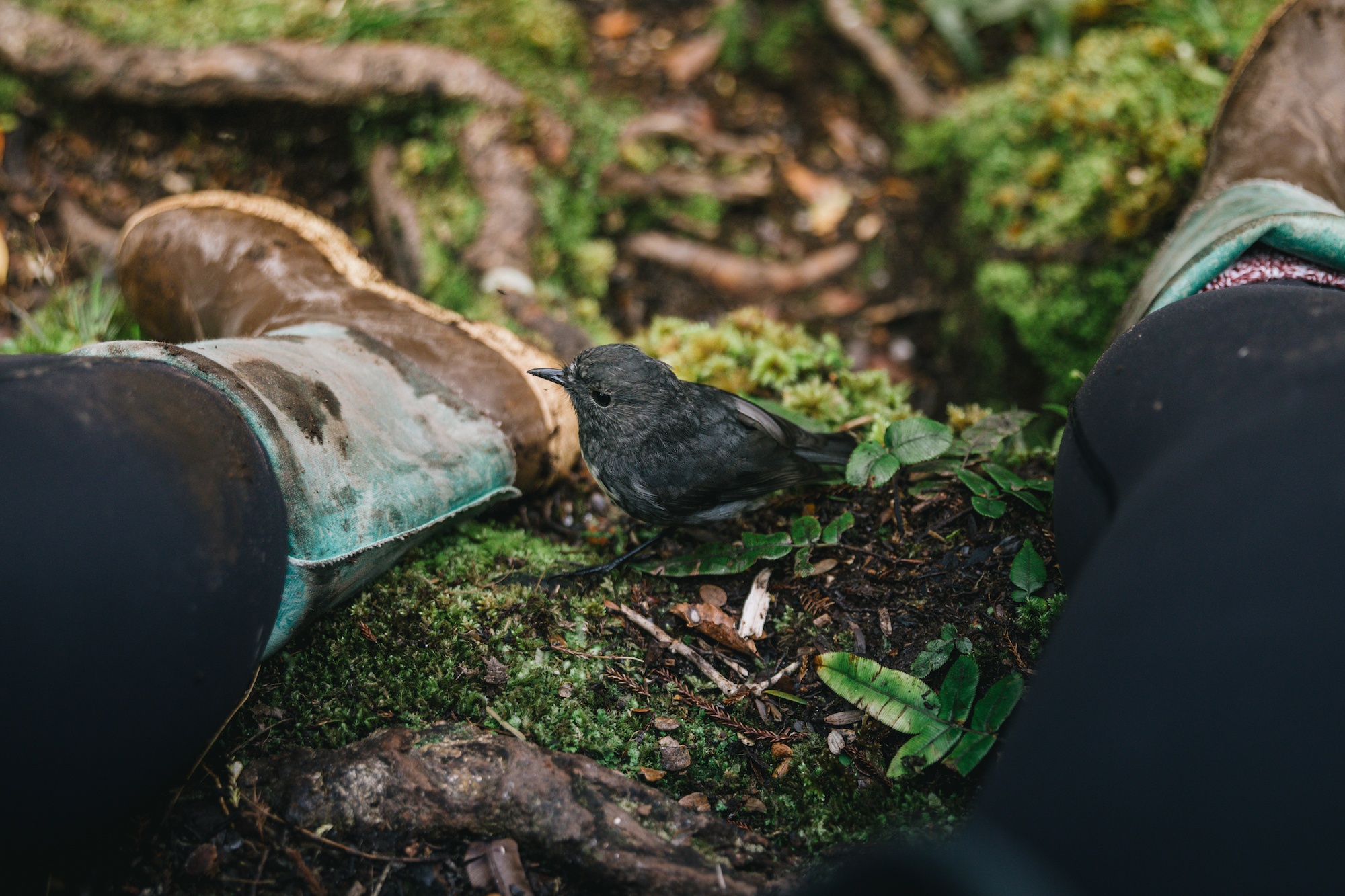
15. Our guardians and fortune tellers – the tīeke/saddleback
Sadly there are solely about 700 South Island saddlebacks are left right here in New Zealand; you may typically see them in Fiordland and on Rakiura. All these birds are descended from the survivors of the 36 saddlebacks rescued in 1964 when a ship by chance introduced rats to their remaining island refuge.
Saved from the brink of extinction, tīeke are one of many nice conservation success tales, and it’s stunning to see them within the wild.
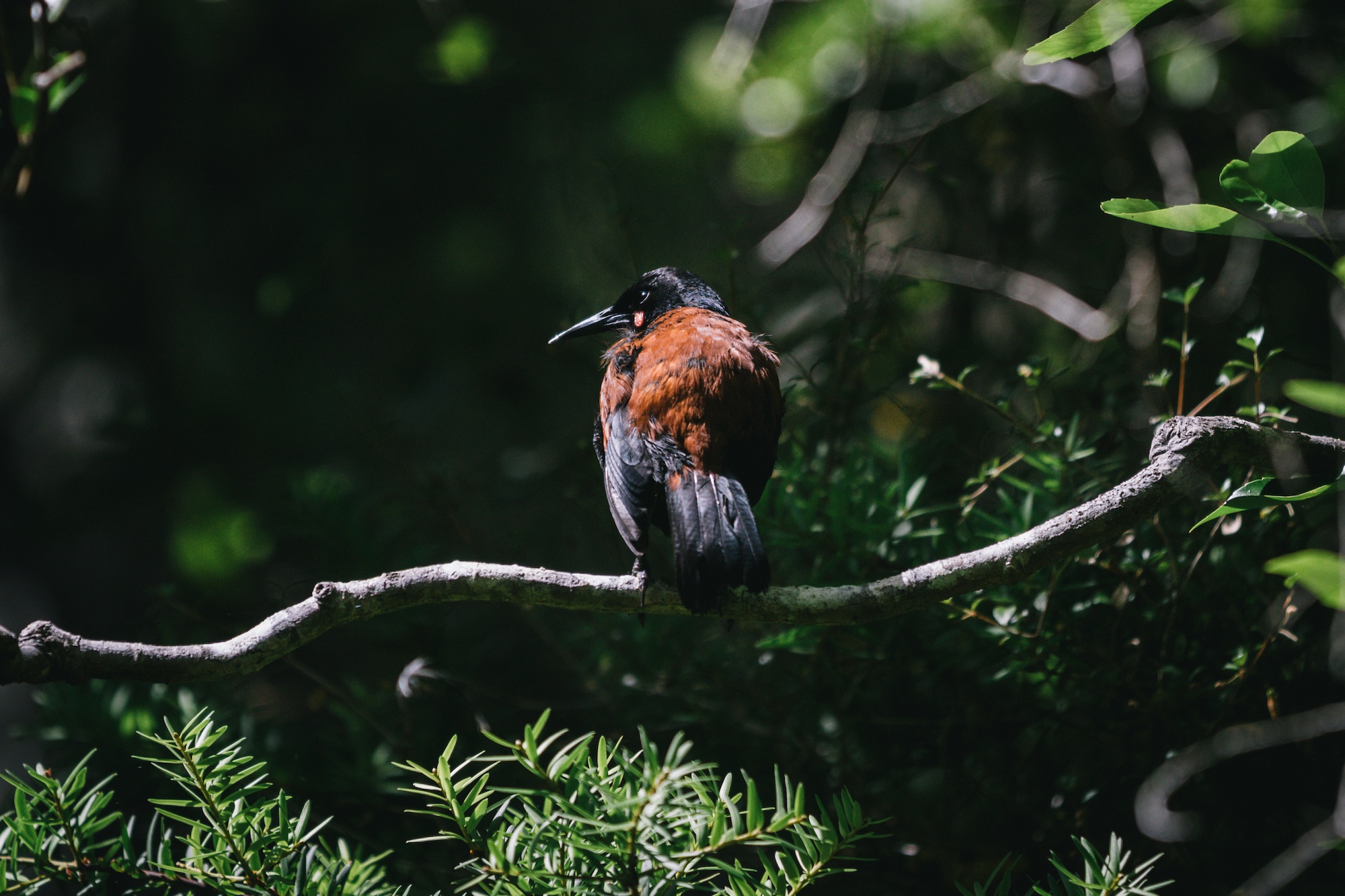
16. And my all-time favourite – the kākāpō
You guys know that I’ve been OBSESSED with the kākāpō since I moved to New Zealand. My absolute favourite, the kākāpō, takes the highest prize for the best, weirdest, most attention-grabbing native chook. Nocturnal and flightless, kākāpō are the one lek-breeding parrot species on this planet, they usually solely breed when rimu timber put out sufficient fruit, normally each two to 4 years. They’re additionally one of many longest-lived chook species on this planet, clocking in at round 90 years outdated and being the heaviest parrot.
The historical past of the kākāpō is a tragic one. As soon as, they have been the third commonest chook in New Zealand. However when people and predators arrived, they didn’t stand an opportunity. They have been decimated, and it wasn’t till the 70s that conservation started actively in search of them once more to save lots of their species. A number of have been present in Fiordland, all males, after which a tiny inhabitants was discovered on Rakiura with females. Whereas they don’t have a lot genetic range, the kākāpō are slowly making a comeback.
With solely 248 kākāpō left in New Zealand, all of them have names and are taken care of by DOC and Kākāpō Restoration, who work around the clock to convey these guys again from the brink of extinction. Sadly you most likely gained’t see any kākāpō in New Zealand, they usually dwell solely on offshore, predator-free islands, with restricted entry.
I’ve been fortunate sufficient to go to them each on Whenua Hou and Anchor Island, the place RealNZ typically helps with trapping. I’ve even been privileged sufficient to satisfy and maintain Sirocco a number of instances – our well-known Spokesbird for Conservation. You might need seen him in that viral video with Stephen Fry and Mark Carwardine.
However if you happen to get fortunate and are right here when there’s a breeding season with many chicks, usually Kākāpō Restoration will usually have a few of the hand-reared chicks on the mainland in particular locations the place you would possibly get the prospect to see them. And we are able to all dream about seeing them within the wild once more in the future!
What South Island birds did I miss? What number of have you ever seen? I wish to hear all of your tales – share!
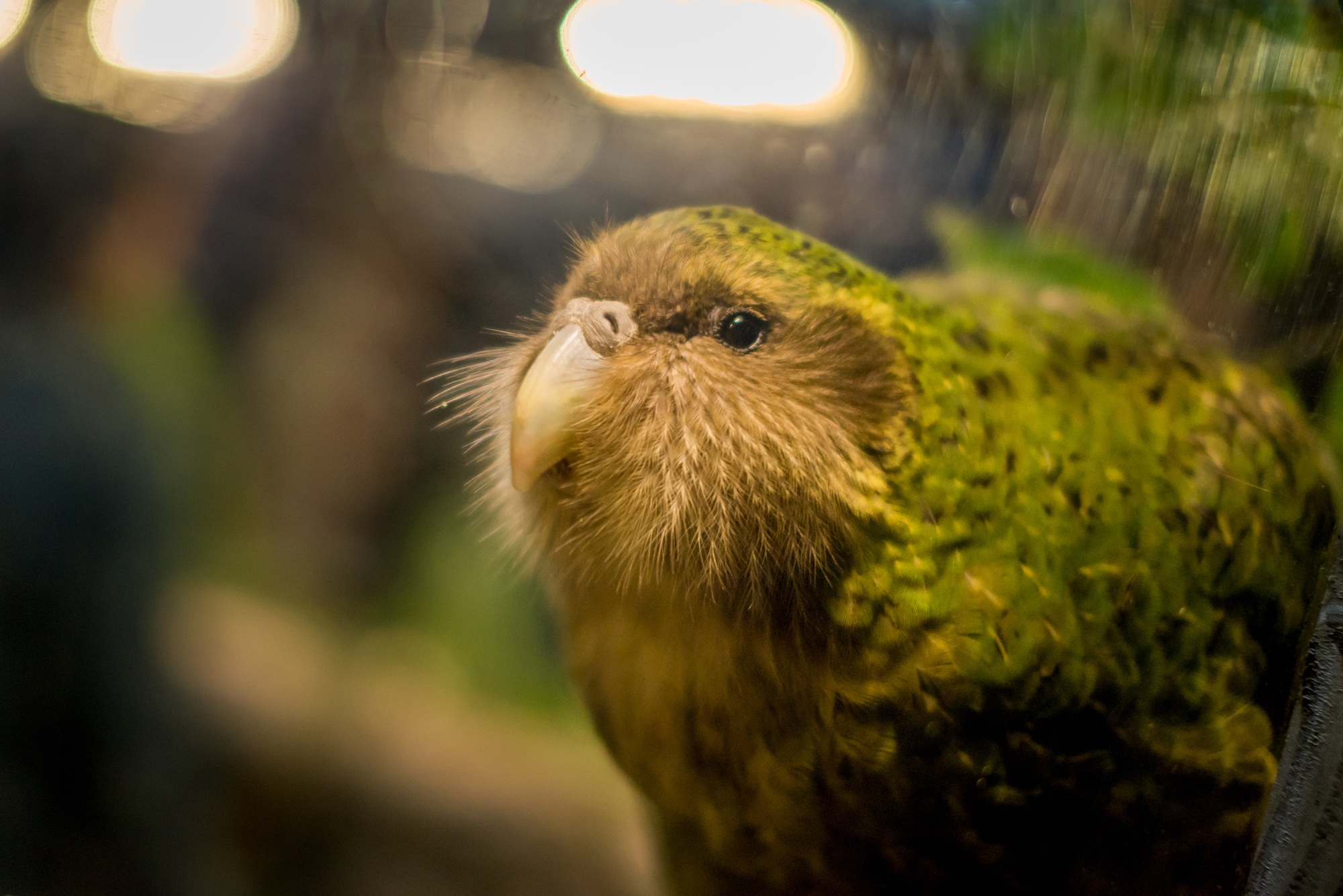
Many due to RealNZ for all of their laborious work in conservation and for being so inspiring, and for supporting me to assist inform these highly effective tales – like at all times, I’m protecting it actual – like you can anticipate much less from me.


